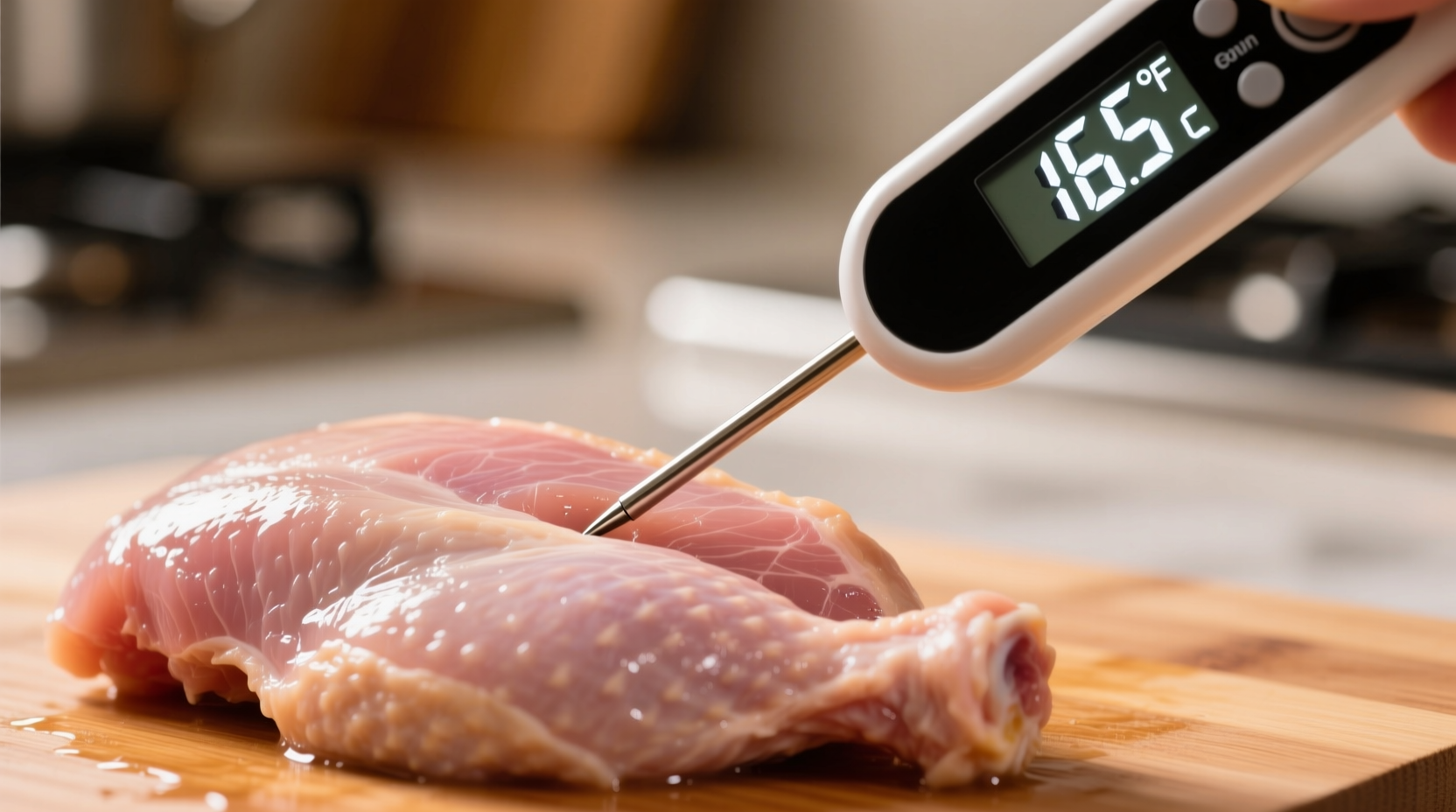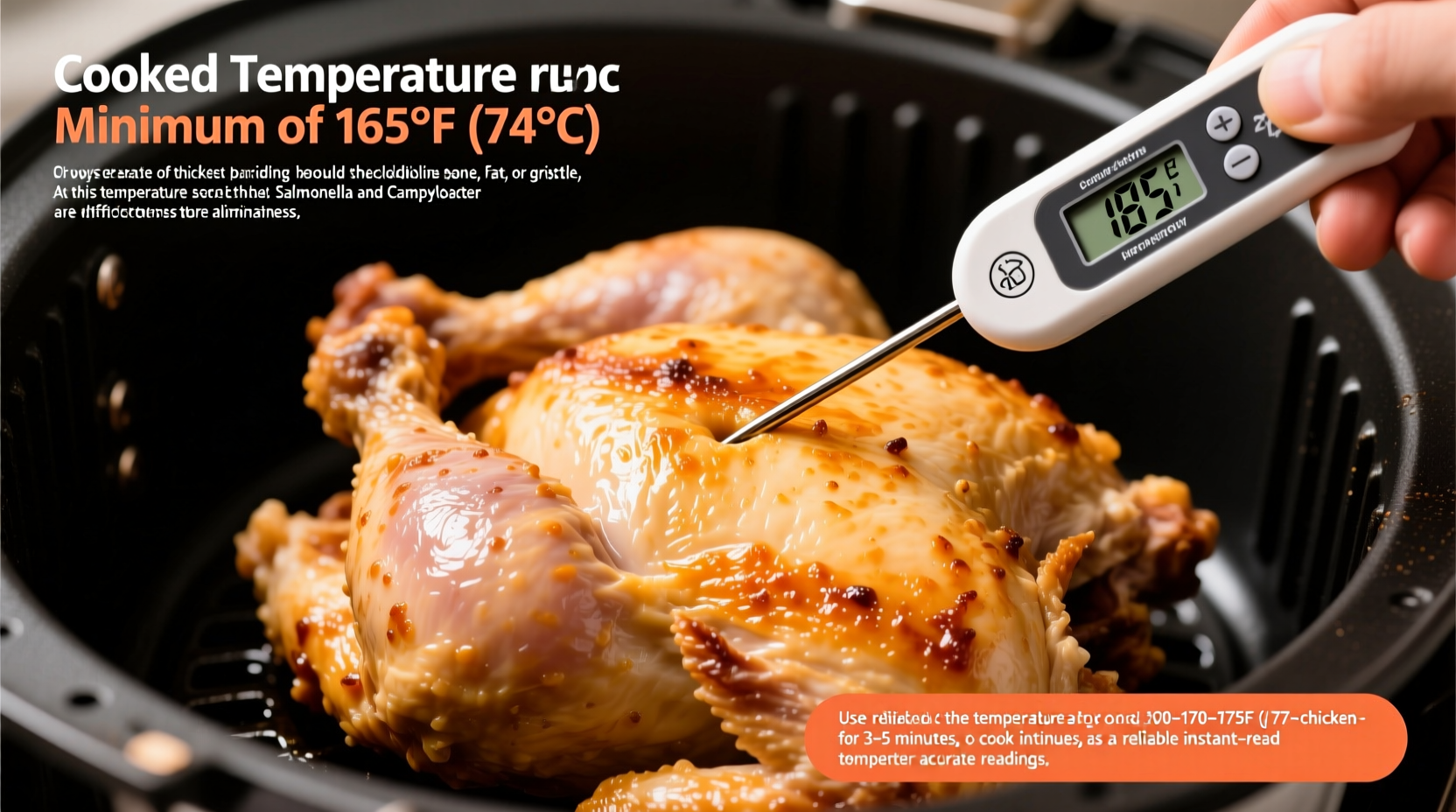Nothing ruins a perfectly prepared meal like foodborne illness. When you're cooking chicken, getting the temperature right isn't just about doneness—it's a critical food safety requirement. Let's explore exactly what temperature cooked chicken needs to reach, why it matters, and how to measure it correctly every time.
Why 165°F Is the Gold Standard for Chicken Safety
Understanding the science behind the magic number helps you appreciate why precise temperature matters. At 165°F (73.9°C), harmful pathogens like Salmonella and campylobacter that commonly contaminate poultry are instantly destroyed. This isn't arbitrary—it's based on extensive research by food safety experts at the USDA.
"The 165°F standard represents the point where pathogens are eliminated in zero seconds," explains Dr. Mindy Brashears, former USDA Undersecretary for Food Safety. "Lower temperatures require holding times to achieve the same safety level, but 165°F provides immediate safety assurance."
| Temperature | Pathogen Elimination Time | Practical Application |
|---|---|---|
| 145°F (63°C) | 8.5 minutes | Rarely practical for home cooking |
| 150°F (66°C) | 2.8 minutes | Requires precise timing, not recommended |
| 155°F (68°C) | 47 seconds | Still risky for most home cooks |
| 160°F (71°C) | 14.8 seconds | Bare minimum, but 165°F is safer |
| 165°F (74°C) | 0 seconds | USDA recommended safe temperature |
How to Accurately Measure Chicken Temperature
Knowing the right temperature is useless if you're not measuring correctly. Follow these professional kitchen standards:
- Use the right thermometer: Digital instant-read thermometers provide the most accurate results (within ±0.5°F)
- Insert in the thickest part: Avoid bones, fat, and gristle which give false readings
- Check multiple spots: Especially with larger pieces like whole chickens or turkey breasts
- Wait 10 seconds: For digital thermometers to stabilize before reading
- Clean between readings: Prevent cross-contamination with raw poultry
"Many home cooks make the mistake of checking temperature too early or in the wrong spot," notes Antonio Rodriguez, culinary expert. "The breast and thigh of a whole chicken often cook at different rates. Always check both areas separately."

Temperature Guidelines for Different Chicken Cuts
While 165°F is the universal safety standard, different cuts have varying ideal textures at this temperature:
- Boneless chicken breasts: Remove at 160-162°F and let rest—carryover cooking will reach 165°F while preventing dryness
- Bone-in pieces: Require full 165°F as bones retain heat differently
- Ground chicken: Must reach 165°F throughout due to increased surface area for bacteria
- Whole roasted chicken: Check both breast (thickest part) and thigh (where bone meets body)
Common Temperature Misconceptions Debunked
Several persistent myths could put your health at risk:
Myth: "Chicken is done when the juices run clear."
Fact: Color isn't a reliable indicator. USDA research shows poultry can appear pink even when properly cooked to 165°F, particularly in younger birds.
Myth: "I can cook chicken to 160°F if I let it rest."
Fact: While carryover cooking does occur (typically 5-10°F increase), relying on this without verification risks undercooking. Always verify final temperature after resting.
Myth: "Restaurant chefs cook chicken below 165°F."
Fact: Professional kitchens may use lower temperatures with precise timing (like 150°F for 3+ minutes), but this requires specialized training and equipment most home cooks lack.
Essential Food Safety Practices Beyond Temperature
Temperature is just one component of safe chicken preparation:
- Prevent cross-contamination: Use separate cutting boards for raw poultry and other ingredients
- Hand hygiene: Wash hands thoroughly after handling raw chicken
- Surface sanitation: Clean all surfaces with hot, soapy water after contact with raw poultry
- Proper storage: Keep raw chicken below 40°F and use within 1-2 days of purchase
- Thawing methods: Only thaw in refrigerator, cold water, or microwave—not on counter
The USDA updated their temperature guidelines in 2023 to emphasize consistent thermometer use after studies showed 38% of home cooks relied solely on visual cues, leading to potential safety risks. This evolution reflects ongoing research into practical food safety for home kitchens.
When Temperature Might Vary Slightly
While 165°F is the universal recommendation, certain contexts have nuanced applications:
- Sous vide cooking: Can safely cook at lower temperatures (145°F for 30+ minutes) due to precise temperature control
- Commercial kitchens: May follow HACCP plans with validated lower-temperature protocols
- Pressure cooking: High-pressure environments can affect pathogen elimination rates
For the vast majority of home cooking scenarios, however, 165°F remains the only temperature you need to remember for safety. Don't complicate a simple rule that protects your health.
Practical Temperature-Checking Tips for Home Cooks
Implement these immediately actionable strategies:
- Keep your thermometer visible on your counter while cooking
- Calibrate your thermometer monthly using ice water (32°F) or boiling water (212°F)
- Invest in a leave-in probe thermometer for roasting
- Check temperature 5-10 minutes before you expect chicken to be done
- Let chicken rest 3-5 minutes after reaching 165°F for optimal juiciness











 浙公网安备
33010002000092号
浙公网安备
33010002000092号 浙B2-20120091-4
浙B2-20120091-4